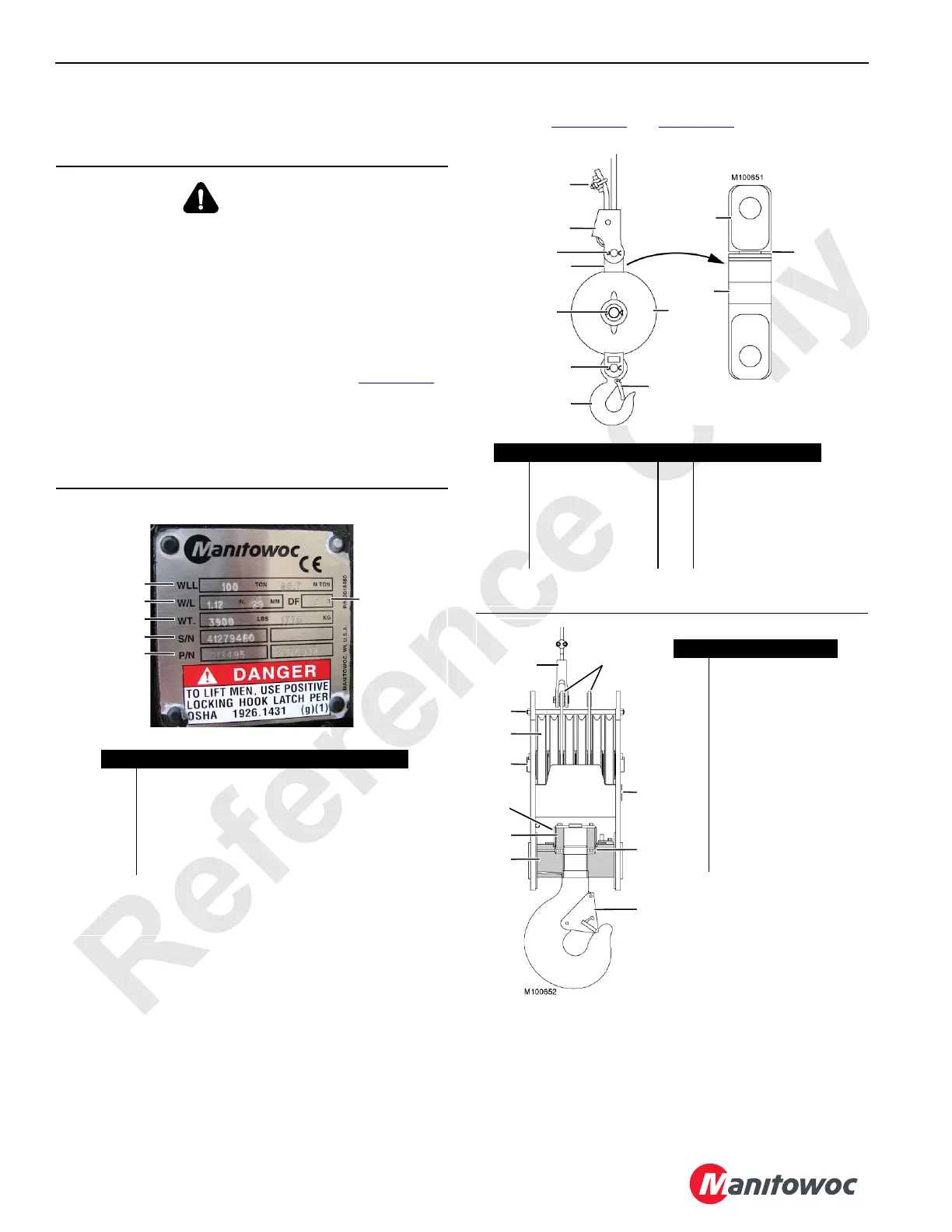HOISTS 16000 SERVICE/MAINTENANCE MANUAL
5-18
Published 05-03-17, Control # 228-03
LOAD BLOCK AND HOOK-AND-WEIGHT
BALL INSPECTION
The operating condition of the load block and the hook-and-
weight ball can change daily with use. Therefore, they must
be inspected daily (at the start of each shift) and observed
during operation for any defects that could affect their safe
operation. Correct all defects before using the load block or
the hook-and-weight ball.
Daily inspection and maintenance will include the following
points (see Figure 5-16
and Figure 5-17):
1. Clean the load block or hook-and-weight ball.
2. Lubricate the sheaves (if the fittings are provided), hook
trunnion, hook swivel, and any other part equipped with
a grease fitting at the intervals specified in the
Lubrication Guide.
WARNING
Falling Load Hazard!
To prevent a load from dropping due to structural failure of
the load block or hook-and-weight ball, use the following
precautions:
• Only use a load block or a hook-and-weight ball
which has a capacity greater than or equal to the load
to be handled.
• Do not remove or deface the nameplate (Figure 5-15
)
attached to load blocks and hook-and-weight balls.
• See the Duplex Hook topic in Section 4 of Operator
Manual for recommended sling angles and capacity
restrictions when the load block has a duplex or
quadruplex hook.
FIGURE 5-15
1
2
3
4
5
6
Item Description
1 Working Load Limit (US and metric ton)
2 Wire Rope Diameter (in and mm)
3 Block Weight (lb and kg)
4 Block Serial Number
5 Block Part Number (OEM and Manitowoc)
6 Design Factor
FIGURE 5-16
Item Description Item Description
1 Dead-End Clip 4c Check Gap Here
2 Socket and Wedge 5 Bolt or Pin
3 Bolt or Pin 6 Weight Ball
4 Swivel 7 Bolt or Pin
4a Swivel Shank 8 Hook
4b Swivel Barrel 9 Latch
1
2
4
3
5
6
4b
4a
4c
7
8
9
FIGURE 5-17
Item Description
1 Socket and Wedge
2 Center Plates
3 Tie Bolt
4 Sheaves
5 Sheave Shaft
6 Name Plate
7 Locking Cap
8Hook Nut
9 Trunnion
10 Thrust Bearing
11 Latch
12 Hook
1
3
4
5
7
8
9
10
6
11
2
